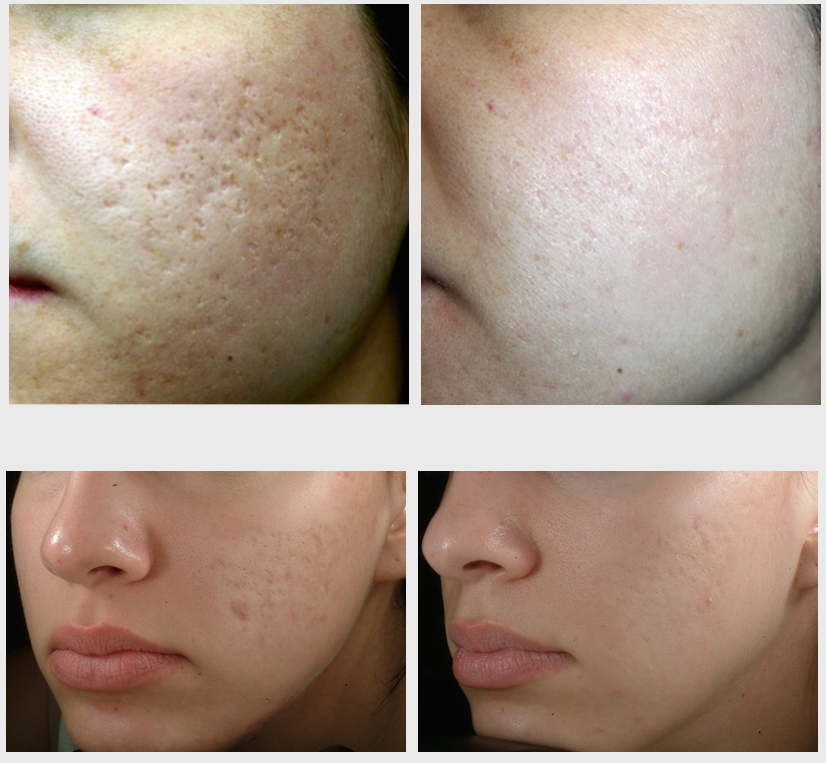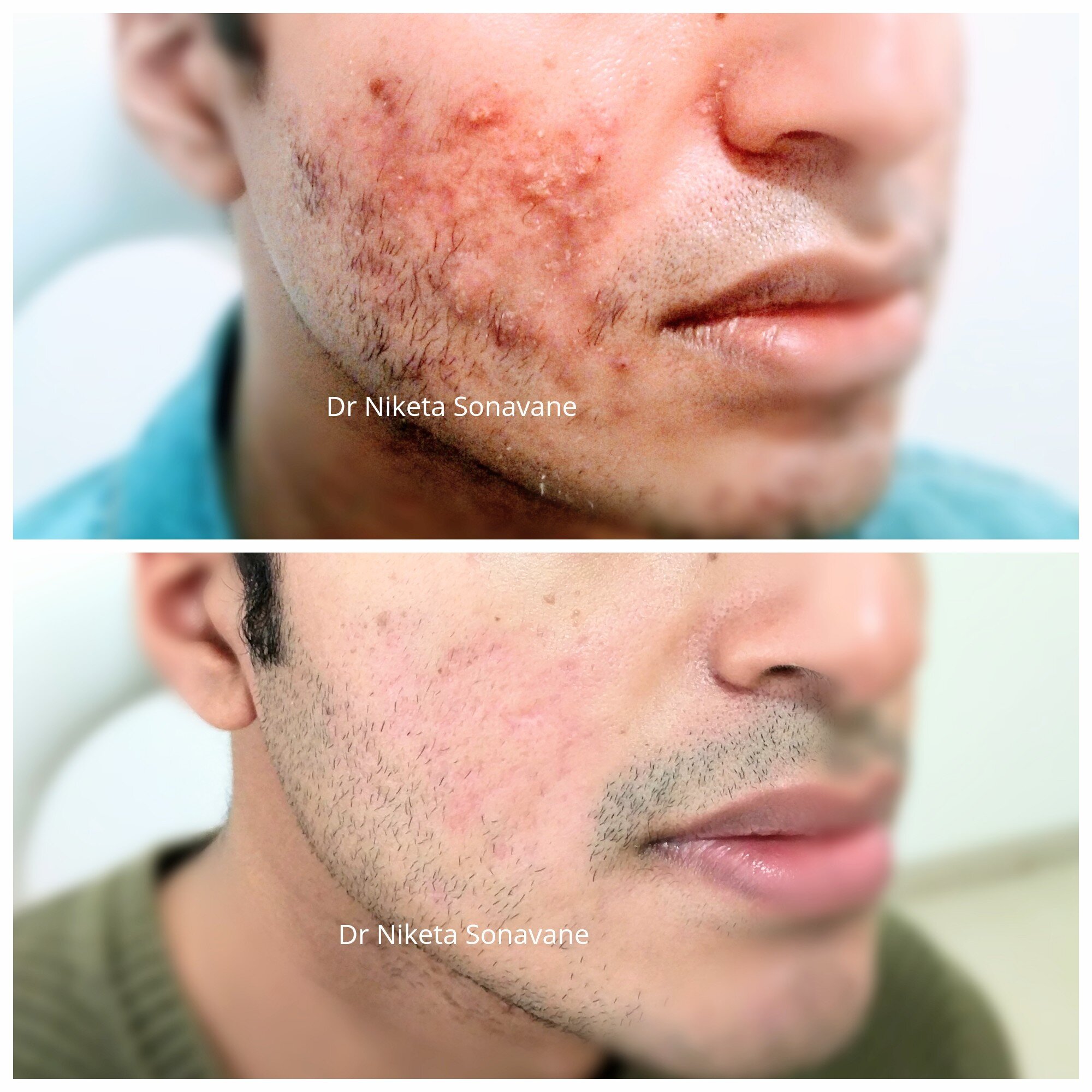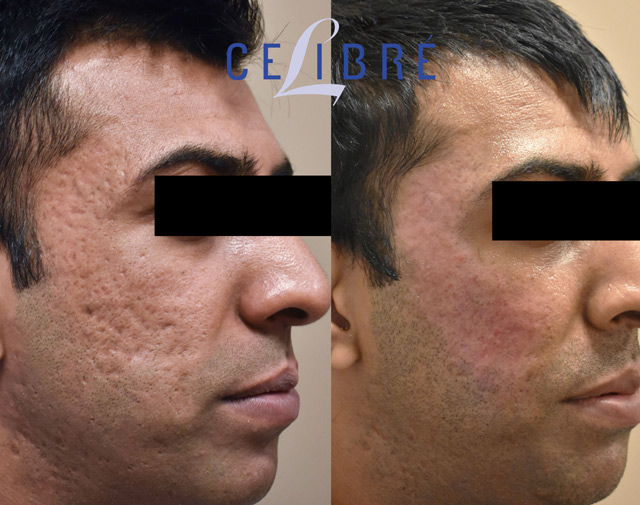Comprehensive Acne and Acne Scars Treatment: Restore Your Skin's Natural Beauty
Comprehensive Acne and Acne Scars Treatment: Restore Your Skin's Natural Beauty
Blog Article
Understanding the Numerous Skin Problem and Efficient Treatment Choices for Acne Scars
Acne marks stand for a complex interaction of skin conditions that substantially influence people' self-confidence and general skin health. As we discover the landscape of acne scar monitoring, it becomes apparent that the trip toward more clear skin may involve even more than simply topical solutions.
Kinds of Acne Marks

On the other hand, hypertrophic scars result from an overproduction of collagen during the healing process, leading to increased locations on the skin. These scars are usually solid and can vary in color, sometimes showing up red or darker than the surrounding skin.
Understanding these kinds of acne marks is essential for establishing an effective treatment strategy - acne and acne scars treatment. Alternatives might include chemical peels, laser treatment, microneedling, or dermal fillers, tailored to the specific mark kind. An extensive assessment with a skin doctor can aid identify the most proper intervention, taking into consideration the individual's skin type, scar intensity, and total skin health
Reasons For Acne Scarring
Marking occurs as an outcome of the body's all-natural healing action to inflammation and injury triggered by acne sores. When acne kinds, it triggers an inflammatory feedback, leading to the launch of various cytokines and development aspects that advertise recovery. Nevertheless, this procedure can often cause extreme tissue formation or poor repair, leading to scars.
The primary reasons for acne scarring consist of the extent of the acne itself, duration of the lesions, and individual skin kinds. Severe inflammatory acne, such as cysts and nodules, is most likely to result in scarring because of deeper cells damages. Additionally, inappropriate handling of acne lesions, such as picking or squeezing, can worsen tissue injury and inflammation, raising the likelihood of scarring.
Hereditary predisposition likewise plays a significant duty; people with a household background of scarring are at a higher danger. Moreover, skin type and shade can influence mark formation, as darker complexion might experience post-inflammatory hyperpigmentation, while lighter skin may establish atrophic scars.
Inevitably, recognizing these causes is vital in taking care of acne and minimizing the possibility for scarring.

Treatment Choices for Scarring
Efficient therapy options for acne scarring differ depending on the type and intensity of the marks. Generally categorized into atrophic, hypertrophic, and keloid marks, these problems require customized methods for ideal outcomes.
For atrophic marks, which are identified by a loss of tissue, therapies such as chemical peels, microdermabrasion, and laser therapy are typically employed. These methods promote skin renewal and stimulate collagen manufacturing, thus enhancing skin appearance. Subcision, a minimally intrusive procedure, can also be effective by separating fibrous bands underneath the skin.
Hypertrophic and keloid scars can be a lot more challenging to deal with. Alternatives consist of corticosteroid injections to lower inflammation and squash the scars. In some cases, cryotherapy or laser therapy may be advised to lessen their look.
Surgical options are offered for extreme scarring, where excision or skin grafting might be required. It's vital for people to seek advice from a skin specialist to evaluate their details mark kind and review one of the most appropriate treatment strategy. Integrating numerous therapies often produces the ideal end results, guaranteeing that each person's one-of-a-kind skin disease is addressed efficiently.
Home Treatments and All-natural Solutions
All-natural options and natural home remedy can supply an easily accessible strategy for individuals looking for to improve the appearance of acne marks (acne scars). Different active ingredients located in the home kitchen area have actually shown potential advantages in enhancing skin appearance and promoting recovery

Another effective alternative is lemon juice, which acts as an all-natural exfoliant and can lighten hyperpigmentation. Nonetheless, it should be browse around this web-site utilized very carefully, as it may cause photosensitivity. Oatmeal masks are additionally helpful; their gentle peeling can assist get rid of dead skin cells you could look here while calming inflammation.
Important oils, such as tea tree oil and lavender oil, can further sustain mark healing because of their antimicrobial buildings. It is crucial to do a patch test prior to applying any kind of treatment to make sure there are no negative reactions. These all-natural remedies can be a corresponding method in the journey to diminish acne marks.
Preventing Future Scarring
Taking on a proactive strategy to skincare can dramatically reduce the danger of creating future acne scars. Among the crucial methods is to manage acne successfully as it develops. This includes making use of non-comedogenic skincare products and drugs prescribed by skin specialists that target acne without irritating the skin. Routine cleansing, peeling, and hydration can aid keep skin health and wellness and stop stopped up pores.
In addition, avoiding the temptation to squeeze or pick acne sores is crucial, as this can bring about swelling and succeeding scarring. Instead, individuals need to concentrate on applying topical treatments that advertise healing and lower swelling. Components such as salicylic acid, benzoyl peroxide, and retinoids are understood for their efficacy in taking care of acne and reducing scars.
Sunlight defense is another essential component; exposure to UV rays can restrain and darken scars healing. Making use of a broad-spectrum sunscreen daily can mitigate website link these impacts.
Lastly, preserving a healthy and balanced diet regimen rich in antioxidants and staying hydrated supports skin regrowth. By carrying out these preventative measures, individuals can dramatically reduce their danger of future scarring and promote total skin wellness.
Final Thought
In conclusion, a comprehensive understanding of acne scars, including both hypertrophic and atrophic types, is crucial for reliable treatment strategies. Customized interventions, consisting of professional therapies and home solutions, can considerably improve skin look and structure. Preventive measures additionally play a critical duty in reducing future scarring. Consultation with a skin doctor continues to be crucial to create customized strategies that think about private skin kinds and scar extent, eventually improving the effectiveness of mark management strategies.
Acne scars represent a complicated interaction of skin conditions that substantially effect individuals' self-worth and overall skin wellness. The 2 key classifications of acne scars are hypertrophic and atrophic scars. These marks are more identified into 3 subtypes: ice pick marks, which are deep and slim; boxcar marks, which are wider and have well-defined edges; and rolling scars, which produce a wave-like look due to uneven skin structure.
A complete assessment with a skin specialist can help identify the most ideal intervention, taking into account the individual's skin type, mark severity, and overall skin wellness.
Examination with a skin doctor remains essential to create customized methods that consider individual skin types and mark intensity, eventually enhancing the efficiency of scar administration techniques.
Report this page